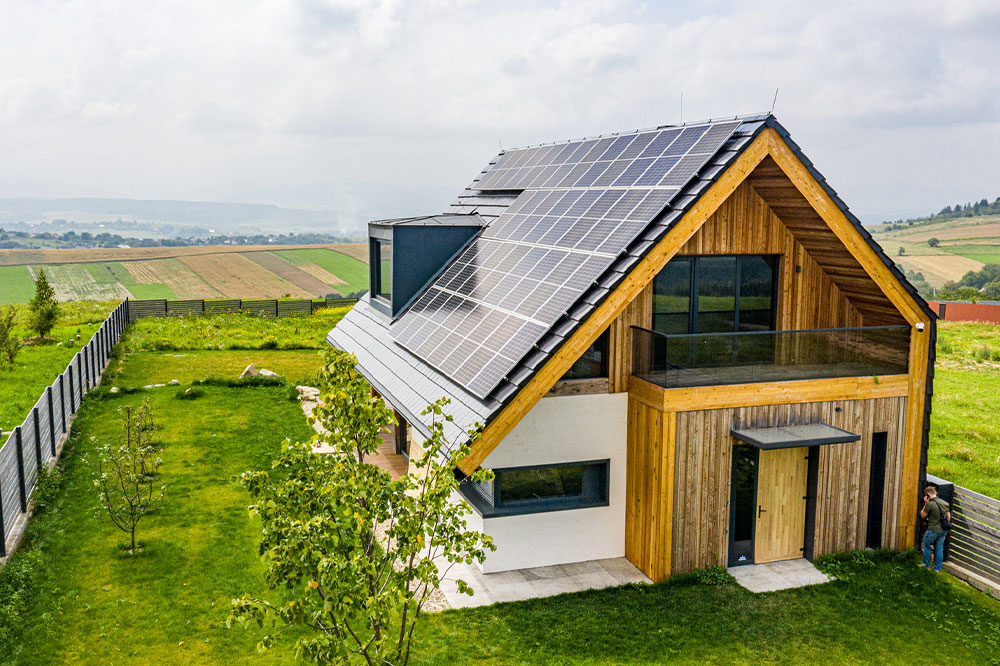How to Build an Eco-friendly House
Using an eco-friendly approach to building and designing a home can reduce the strain on the environment. But the process involves meticulous planning and loads of effort. One must use sustainable architectural practices and raw materials that do not harm the planet. Once the structure is ready, individuals must install appliances that consume less energy. All of this can help create a comfortable home that does not disturb the environment.
Characteristics of a sustainable house
Some of the factors that matter while building a house include:
- Environmental factors
One of the aims of building a sustainable house is to reduce its ecological footprint on the Earth.

A socially sustainable house accommodates the people living in it, which may have limited mobility. So it caters to these needs and is designed in a manner that prevents mishaps or injuries.
Eco-friendly housing needs to become more affordable to more people around the world. This is important as it can inspire many to choose this option as their home, helping reduce construction costs and renovation costs in the future.
Things to remember when planning to build an eco-friendly home
Small is big
A smaller home needs much fewer resources than a big home, as is obvious.
Sustainable materials
Thankfully, many options are available in the market. This includes sustainability-certified wood products, insulation that is made up of recycled materials, and reclaimed or salvaged wood, which can easily be used for construction. Locally sourced material is also always preferred. It is also to be noted that these sustainable options are not just good for the environment but also great for indoor air quality. Many materials today emit volatile organic compounds and other air pollutants into the environment, which can harm the body, especially anyone dealing with respiratory issues. Since people spend hours in the house, choosing clean materials over other construction materials is a smart option.
Passive home planning
A passive home aims at maximizing the energy use in the house. This means that while designing the house and during construction, heating and cooling resources should be efficient so that there is no extra energy used for these comforts. The wall insulation should be carefully planned, which makes a good surface shell structure. Windows should be made of glass that helps in limiting heat transfer. The walls, windows, and roof (also called the house envelope) should provide a degree of airtightness, which means that the air ventilation system should be adequately regulated to allow natural ventilation and warmth. The orientation of the house should also be looked at because any solar panels installed need to be facing the light source with no obstructions.
Thoughtful landscape designing
Think of other elements that can be included in the house, like managing rainwater. This can be collected from the rooftop and run into rain barrels which can then be used to water the landscaping plants. Also, make sure that the ground is impervious so that the rainwater can get absorbed into the ground and can be reused again through pipes and a motor system.
Also, while landscaping, choose plants that only need minimum energy for maintenance, for example, anything that may not need a mower. Native plants with low watering needs can also be planted. To block water runoff, you can also plant some trees and plants near the gutter and downspouts. You can also consider making the landscape wildlife friendly so it invites some small wild animals by providing some food and water and some shelter in the garden.
Cost of building an eco-friendly house
According to some experts, the construction cost of the house comes to around 61% of the overall cost. A rough estimate for the same is around $240,000 to $258,000. This also depends on the size of the house. However, taking an average like this into account will keep you mentally prepared for any other costing.
The interiors will probably take around 25 percent of the total costing and can range anywhere between $60,000 and $65,000. Framing is also an important part of the budget, including roofing, sheathing, and general metal and steel. This can cost around $42,000 to $44,000. It is advised to speak to a professional architect who specializes in zero-energy homes and can help with getting the right estimate for a budget for your requirements. Since budgeting includes several factors, it is important to have a detailed discussion to understand where to divide your costs and save some.

